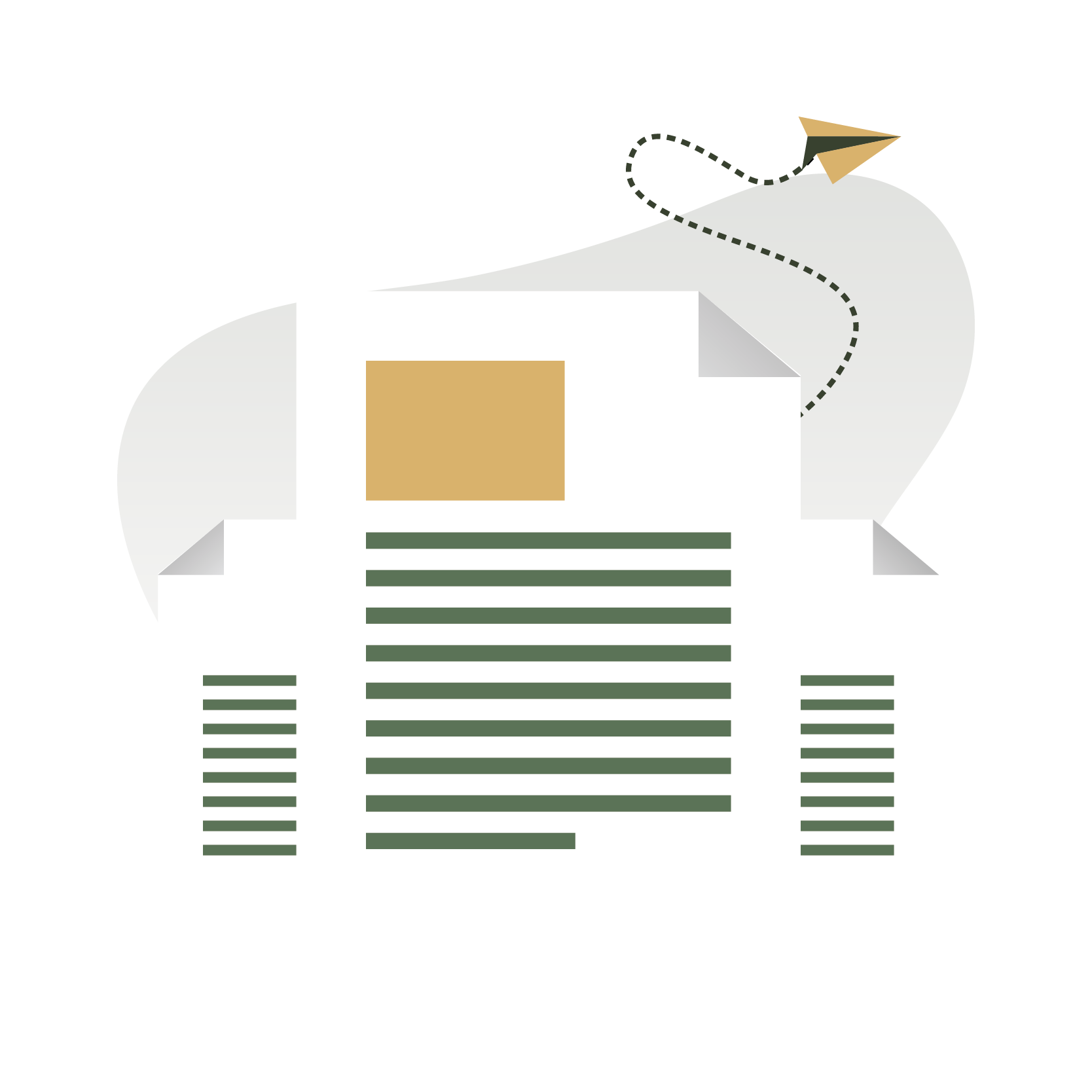
I hope you enjoy reading this blog post.
If you want me to do your marketing for you, click here.
Ebooks
eBooks are long-form content that can position your brand as an authority on a topic. Well-designed eBooks effectively manage a balance of visuals and text.
There are three standard eBook formats: EBUP, AZW, and PDF. PDF files are one of the most used eBook formats by marketers.
When used for marketing purposes, online marketers often don't focus on eBook sales; instead, they use eBooks as an effective lead magnet. The high perceived value of an eBook makes potential customers more likely to share their contact details for the information you offer, increasing your lead generation volumes.
The contact information (e.g., email address) that you gain can be used to deliver a copy of your book to the prospect and is subsequently used in your email marketing efforts. For this reason, it's best practice to keep your eBooks gated; you should require an email address before granting anyone access.
Your eBook should be highly relevant to your target audience; it should offer high-quality content and meet their needs. To do less may make recipients feel cheated, which increases the likelihood of new leads unsubscribing.
"Brand can magnify an eBook’s appeal. For example, if DavidsTea offered a free eBook called "The Ultimate Guide to Blending Tea," I believe it would be a success. In the same way, if Starbucks created an eBook, "How to Recreate Starbucks Drinks at Home: Everything You Need to Know About Creating Our Five Favorites," it would likely do well, too. In both cases, the brand behind the eBook creates value for the publication and the audience.”

The Role Of eBooks In Your Marketing Efforts
Your tea or coffee brand can create an eBook as part of your content marketing strategy. Creating an eBook around the theme relevant to your brand lets you showcase your authority on the subject. It also equips you with a resource from which you can extract and repurpose content; this allows you to scale your marketing efforts.
There are two main ways that eBooks can make your content marketing efforts more efficient. First, you can create blog posts from your eBook content and drive awareness to lead magnets. Second, you can take small excerpts from your eBook as content for your social media marketing efforts. Through such micro-content, you can promote your eBook or drive traffic to your website; either action is beneficial to you.
One way to use social media to increase the number of people who download your eBook, is to capture social proof that highlights your eBook's value. Publicizing such social proof on social media creates trust and inspires more people to opt-in and receive your content.
Marketing eBooks
For e-commerce coffee and tea companies, an eBook's objective is usually to get your brand in front of new potential customers to promote your products. An eBook marketing strategy hinges on getting your publication in the inboxes of as many people within your target audience as possible.
To achieve this, you will need to break down your eBook marketing into four phases:
At each phase, you will need to use different tactics.
1. Production
Producing your eBook involves creating a compelling title with a clear value proposition and SEO relevance, making it more likely to gain visibility in search engines.
Cover Design
The cover is an extension of the marketing plan for an eBook. An important element of cover design is to determine what the book cover needs to emphasize. The cover should be visually compelling and captures attention; careful consideration should be given to graphics and fonts.
The cover must be broadly appealing and communicate that the pages within are worth a reader’s time and attention. If possible, your eBook design should make the reader feel something (e.g., excitement or tranquility), making them more likely to get your book.
A good book cover should be consistent with what the reader expects of the content, but unique enough to stand out. You can develop two versions of the eBook cover, then turn to social media and let your audience, which should be your target market, determine which design resonates most with them. This also builds a buzz for your eBook, which you can leverage at launch.
Forward
Getting a short forward written by an influencer or authority within your industry immediately endows your eBook with credibility in the eyes of your audience and may give you an ally in promotion. The forward is important to your eBook because it sets expectations for the book’s contents.
Writing
The length of eBooks varies but striving for 2,000-2,500 words is a fair benchmark. You want to ensure the copy of your eBook is strong; it should be easy and insightful, and, if possible, actionable. Consider breaking the text up with images to keep readers engaged as you would do on a web page.
2. Pre-launch
Promote The eBook On Your Website
Adjust your website to promote your eBook. You may wish to add a popup promoting the upcoming eBook, thereby collecting leads early. Additionally, you can offer to give the eBook to those who sign up now, before the official launch. Choose to add strong calls to action on your best-performing blog posts or prominently display them on your website's homepage.
You may consider taking one chapter out of your eBook and offer it to your prospects as a sample. Showing a sneak peek of some of the eBook's value upfront inspires people to believe your eBook will be valuable to them. Include a strong call to action at the end of the teaser chapter to improve sign-ups.
Create A Landing Page Marketing Your eBook
By actively marketing your brand's eBook, you can increase your email list growth. One tactic is creating pay-per-click ads (e.g., Google Ads) to drive traffic to an eBook landing page, promoting your book.
To ensure this landing page performs well for you, it must have a clear call to action that offers significant value to the visitor (e.g., "Download Your Free eBook Now"). Consider using a video to discuss the benefits of your eBook, including what they will learn.
Build Interest In Social Media
Teasers are an effective means by which you can build interest in your eBook, and start promoting it on social media. Build a buzz for the upcoming eBook by sharing a preview of some interesting facts, actionable step-by-step tips, or noteworthy quotes from your eBook. These bite-sized pieces of content should be engaging, and videos or images often work well.
Use Facebook Ads
Create a Facebook marketing campaign to raise awareness about your eBook. Facebook’s hyper-targeted advertising capabilities can effectively promote your eBook during the pre-launch phase. Use Facebook Ads to drive traffic to your email-gated landing page, through which you are building your email list.
Get Testimonials
Deliver your eBook to those who signed up first and use email marketing as a means of generating early reviews (testimonials). You may have to incentivize testimonials with discounts or rewards.
3. Book Launch
Have Reviews Ready
Use the reviews (testimonials) gathered from your initial eBook readers to promote the book to a wider audience. Showcasing social proof that people within your target audience like your book will incentivize others, within the target market, to download it. Continue collecting testimonials and quotes as you bring your eBook to market; these will be used in your post-launch marketing efforts.
Promote On Social Media
Actively promote your eBook on various social platforms such as Facebook, Twitter, LinkedIn, Pinterest, Instagram, YouTube, Quora, and Reddit. Use paid ads to promote your eBook to your audience and build recognition of your book's cover.
4. Post-Launch
Update Your Landing Page
Enrich your landing page with testimonials gathered from those who have consumed your eBook. Showing prospects that others, similar to themselves, found your eBook valuable increases your conversion rate. Consider A/B testing as to which testimonials perform best. Your landing page should have the core elements of a strong sales page.
Have A Supporting Email Sequence Ready
The goal of your eBook is to drive sales. Ensure you have an email sequence that drives your new email list members to other valuable content your brand has produced (e.g., your top-performing blog post), and then eventually, showcase products you want to sell.
Taken together, this is what your eBooks sales funnel should look like.
|
eBooks Sales Funnel |
|||
|
First, generate some traffic |
Facebook Ads Google Ads |
||
|
And send it to your awesome-looking landing pages |
Industry-specific landing pages |
||
|
Then convert your visitors to subscribers and leads |
Built-in web forms Exit-intent popups |
||
|
Nurture them and turn them into your raving fans |
Automated email marketing Free and paid webinars |
||
|
Then get them to buy your products |
Coversion-focused sales pages Stores for your products Ecommerce integrations |
||
|
Win them back if they abandon their order |
Automated abandoned order emails |
||
|
And finally, get paid! |
Payment processors Automated order confirmations |
||
Get Some Free Help
If you've published a book about tea or coffee, I invite you to apply for a pro bono project. Once your book is converted to an e-book we will work together to grow your email list.

Use eBooks Effectively.
Purchase your content marketing strategy and get strategic recommendations for using eBooks and other forms of content to promote your brand.


I hope you enjoy reading this blog post.
If you want me to help you to sell more coffee and tea, book a call.


